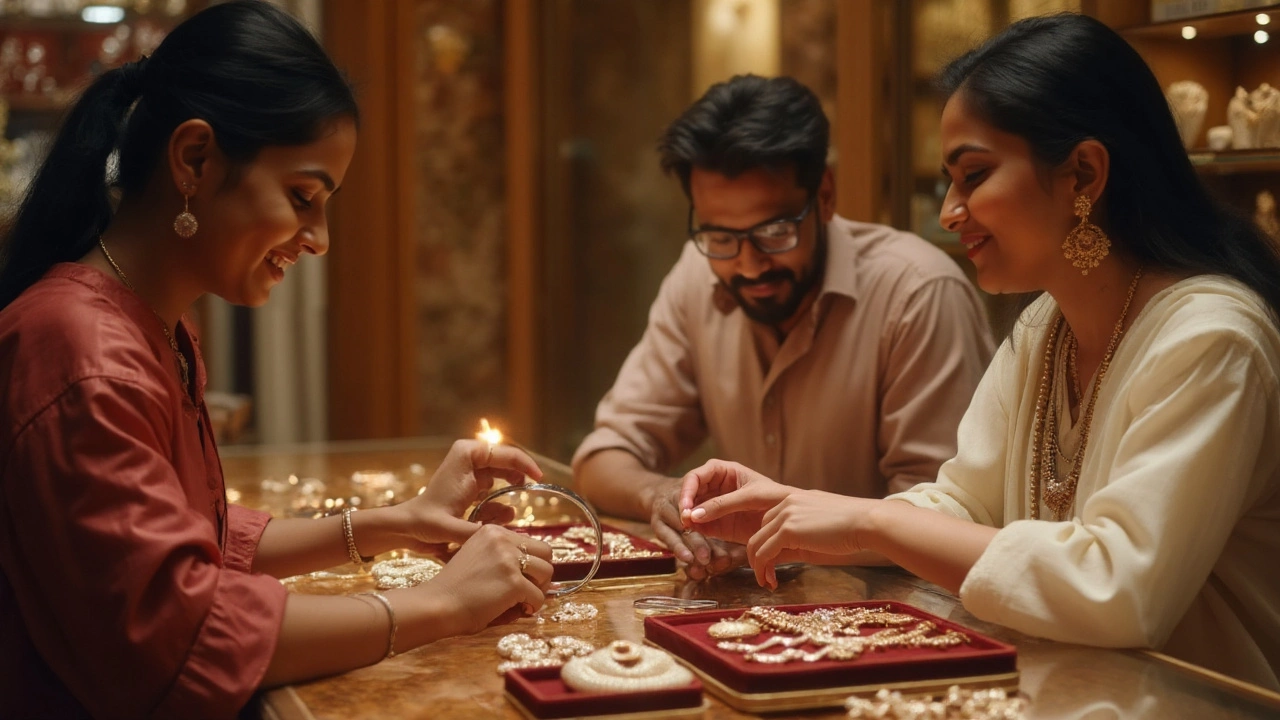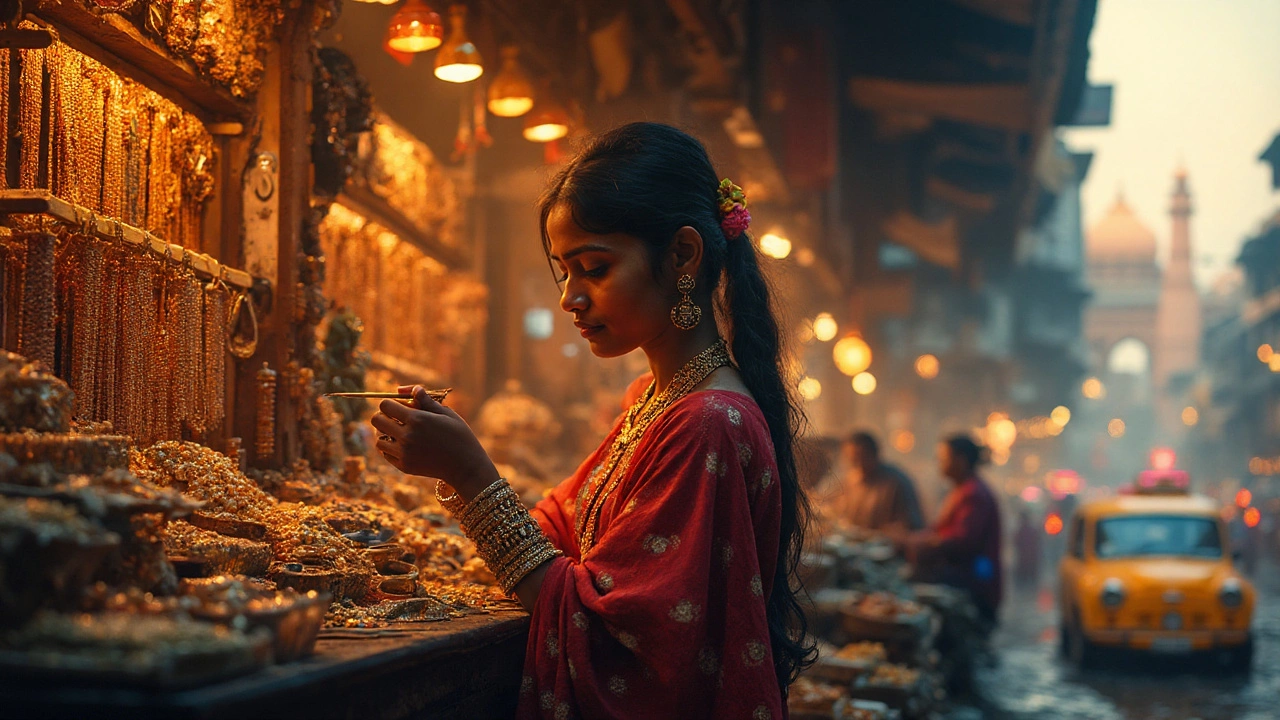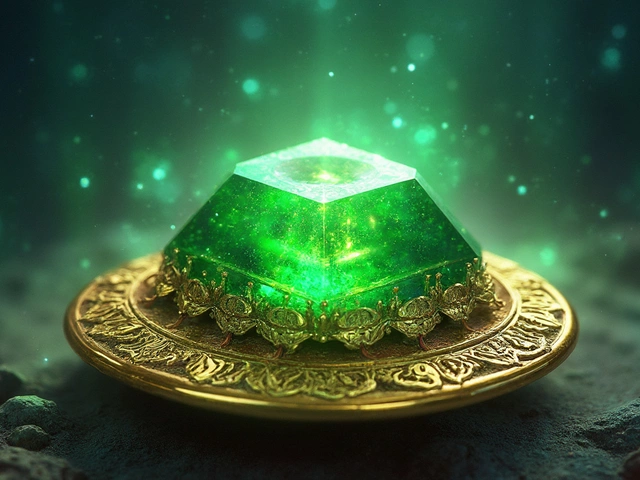You clicked because you want a straight answer, not a history lecture. If you’re asking which Indian city is famous for jewelry, the honest fix is this: there isn’t just one. India is a patchwork of jewelry hubs, each legendary for a different craft-diamonds in Surat, jadau in Jaipur, pearls in Hyderabad, temple jewelry in Chennai, and so on. The trick is matching your goal-bridal set, investment gold, diamond ring, or heirloom piece-to the right city, season, and seller. I live in Mumbai and buy here all the time, but even I won’t pretend there’s a single “best” city. Your best city depends on what you want.
If your head is buzzing with options, keep reading. I’ll show you a clean, workable map of Indian jewelry cities, quick rules to choose, what to buy where, how to check authenticity (BIS hallmarking, gemstone and diamond certificates), how pricing and making charges actually work, and the landmines to avoid.
TL;DR
- Quick picks: Jaipur (kundan, polki, jadau), Surat (diamond cutting/polishing), Mumbai (retail diamonds and gold, Bharat Diamond Bourse), Hyderabad (pearls, lac bangles), Chennai (temple jewelry), Kolkata (lightweight gold craft), Thrissur (gold wholesale), Rajkot (machine-made lightweight gold), Cuttack (silver filigree).
- Rule of thumb: Choose city by material and style, not hype. Diamonds → Surat/Mumbai; pearls → Hyderabad; kundan/jadau → Jaipur/Bikaner; temple jewelry → Chennai/Kanchipuram.
- Authenticity basics: BIS hallmark with HUID for gold; GIA/IGI/GCAL for diamonds; valid origin and treatment disclosure for gemstones; lustre and drill checks for pearls.
- Price math: Final price = (Gold rate × purity × weight) + making charges + GST (3% on gold value + 5% on making). Making charges vary widely (3-8% machine-made, 12-25% hand-crafted, more for jadau/polki).
- Paperwork: Carry PAN for high-value buys (above ₹2 lakh). Ask for buy-back/exchange policy in writing.
Quick answer and a practical map of India’s jewelry cities
Short answer first: multiple Indian cities are “famous” for jewelry, each for a different reason. If you want one city that covers the widest ground fast, Mumbai is the retail engine; if you want the specialized heartlands, head to Jaipur for jadau/polki and to Surat for diamonds. For pearls, go Hyderabad without blinking.
Here’s the 10,000-foot view you can actually use:
| City | Known for | Best for | Where to look (areas/markets) |
|---|---|---|---|
| Jaipur | Kundan, polki, jadau; meenakari; colored gemstones | Bridal heirloom sets; gemstone-heavy designs | Johari Bazaar, MI Road; Jaipur Jewellery Show (Dec) |
| Surat | Diamond cutting & polishing | Diamond sourcing; custom engagement stones | Diamond district workshops; trade networks |
| Mumbai | Diamond retail; gold retail; design variety | One-stop city shopping with certification options | Zaveri Bazaar; BKC (Bharat Diamond Bourse) |
| Hyderabad | Pearls (natural & cultured), lac bangles | Layered pearl strands, South-style sets | Charminar area markets |
| Chennai | Temple jewelry; heavy 22K work | Bharatanatyam/bridal temple sets | T. Nagar, Mylapore |
| Kolkata | Lightweight 22K gold craftsmanship | Daily-wear gold with lower making charges | Bowbazar and established family jewellers |
| Thrissur | Gold wholesale & manufacturing | Competitive gold rates; wedding shopping | Clustered showrooms and wholesalers |
| Rajkot | Machine-made lightweight gold ornaments | Budget-friendly daily wear | Manufacturing hubs/suppliers |
| Cuttack | Silver filigree (tarakasi) | Statement silver jewelry and gifts | Local artisan workshops |
| Bikaner | Traditional kundan & jadau | Heritage-style bridal sets | Old-city jewellers |
| Varanasi | Gulabi meenakari accents; silverware | Art-detail pieces with enamel | Local craft lanes |
| Coimbatore | Manufacturing and hallmarking ecosystem | Consistent quality in 22K | Established chains and makers |
Why trust this map? The Gem & Jewellery Export Promotion Council regularly notes that India cuts and polishes the vast majority of the world’s diamonds, with Surat as the workhorse. Mumbai hosts one of the world’s largest diamond exchanges (Bharat Diamond Bourse). BIS hallmarking with HUID is the national standard for gold purity checks. Jaipur’s colored gemstone trade is an open secret, and Hyderabad has been the “City of Pearls” since the Nizams. These aren’t travel posters; they’re supply chains.
If your main intent is “Which single city is the most famous?”-for traditional, craft-heavy jewelry, Jaipur takes the crown. For diamonds, it’s Surat (production) and Mumbai (retail). For pearls, Hyderabad. If you typed Indian city famous for jewelry into search, pick your target from those three and you’ll be right most of the time.
How to pick the right city for your goal (fast, practical, step-by-step)
Use this quick flow to cut the noise and land on the right city. This is exactly how I advise friends before wedding shopping.
- Define the piece and the purpose.
- Engagement ring with a certified diamond? Choose Mumbai or Surat (stone from Surat, retail and setting in Mumbai) or Delhi for designer settings.
- Bridal jadau/polki with heritage vibes? Go Jaipur or Bikaner.
- Temple jewelry for dance or South weddings? Chennai/Kanchipuram.
- Pearls for classic strands and chandbalis? Hyderabad.
- Daily-wear 22K with lower making charges? Kolkata or Rajkot.
- Investment bars/coins (22K or 24K)? Any BIS-licensed jeweller; compare rates in Thrissur/Coimbatore/Mumbai.
- Set a real budget bracket (and stick to it).
- Gold jewelry pricing = metal value + making charge + GST.
- Machine-made: 3-8% making charge; hand-crafted: 12-25%; jadau/polki can be higher. If you’re quoted 30% for a simple chain, walk.
- Pick the right season.
- Big city sales hit around Akshaya Tritiya, Dhanteras-Diwali, and year-end. Jaipur’s JJS show (December) is great for variety but book early.
- Monsoon months can mean calmer stores and more attention from karigars.
- Lock your authenticity checks.
- Gold: BIS hallmark with HUID (a unique alphanumeric ID), karat mark (e.g., 22K 916), and jeweller’s mark. Verify HUID via the BIS Care app.
- Diamonds: Ask for GIA/IGI/GCAL grading for the stone, even if it’s set.
- Gemstones: Demand disclosure of treatments (heat, dye, glass-fill). Natural untreated emeralds and rubies are rare and pricey.
- Pearls: Check lustre, surface, drill holes, and weight; many “Hyderabad pearls” are cultured (which is fine). Ask what you’re paying for.
- Compare at least three quotes, apples-to-apples.
- Match gold rate per gram (same karat), weight, design complexity, and certification. Split out the making charges on paper.
- Ask buy-back and exchange policy in plain writing. Many will refund 90-100% of net gold value but exclude making charges.
- Plan the build time.
- Custom pieces take time: 2-6 weeks for diamond rings, 4-10 weeks for heavy jadau sets. Don’t cut it close to the event date.
- Payment and paperwork.
- For high-value purchases (₹2 lakh+), carry PAN and valid ID. Keep the tax invoice safe for future exchange or insurance.
This flow saves you from aimless window-shopping and puts you in control quickly. If a store pushes you to “decide today” before showing you hallmarking or certificates, that’s a sign to leave.

City spotlights: what to buy where (and how to shop smart)
Here’s the on-ground stuff people actually ask me when they plan a trip.
Jaipur: India’s jadau and colored gemstone capital
- What to buy: Kundan and polki sets, jadau bridal suites, meenakari work, gemstone-studded kadas, navratna jewelry.
- Why Jaipur: Historic karigar base, cutting and trading of colored gemstones, and a design language that still feels handmade and royal.
- Shop smarter: Ask if “polki” is natural uncut diamond or glass/foiled stones. Natural polki commands a premium; glass-filled lookalikes are cheaper. Insist on clear disclosure.
- Tip: Visit during the Jaipur Jewellery Show (Dec) for a sweeping look at trends and makers, then buy from a jeweller whose workshop practices you can verify.
Surat: The diamond workhorse
- What to buy: Loose diamonds for engagement rings, matched pairs for studs, lab-grown diamonds if you want larger looks on a budget.
- Why Surat: It cuts and polishes a huge share of the world’s diamonds. You’re closer to the source, and you’ll see a wide range of cuts and qualities.
- Shop smarter: Always get a graded stone (GIA/IGI/GCAL). Decide your 4Cs trade-offs: prioritize cut and eye-clean clarity over chasing high color grades you won’t see once set. Lab-grown can cost far less; disclose and certify either way.
- Tip: If you don’t want to deal with workshops, source your stone via Surat contacts and set it in Mumbai or Delhi where retail service is easier.
Mumbai: Retail muscle and diamond retail capital
- What to buy: Certified diamond jewelry, 22K gold in popular designs, custom settings with faster turnarounds.
- Why Mumbai: It sits on the diamond pipeline (Bharat Diamond Bourse) and has intense competition among retailers, which keeps pricing honest if you compare.
- Shop smarter: Compare making charges across three stores for the same style. Ask for stone certificates and verify gold HUID on the BIS app. Don’t be shy to negotiate on making charges.
- Tip: If you’re pressed for time, Mumbai offers the widest certified options in one city stop.
Hyderabad: Pearls, with heritage
- What to buy: Layered pearl strands, chandbalis with pearl drops, pearl-studded chokers, lac bangles as souvenirs.
- Why Hyderabad: Called the City of Pearls thanks to old trade routes and patronage. Today most are cultured pearls; quality ranges widely.
- Shop smarter: Inspect lustre and surface; avoid chalky or overly light pearls. For pricey pieces, ask for details on origin and treatments.
- Tip: Pair pearls with simple 18K gold findings for daily wear; it keeps the look classic and cost sensible.
Chennai (and Kanchipuram): Temple jewelry done right
- What to buy: Temple-style sets with motifs of gods and goddesses, coin necklaces, vanki armlets, and dance jewelry.
- Why Chennai: Strong workshops for South Indian design and a culture that still uses these forms as living tradition.
- Shop smarter: Heavy pieces carry higher making charges-get the gold weight and making charge split. Try them on; temple jewelry needs to sit right on the neck and shoulders.
- Tip: If it’s for classical dance, confirm if it’s plated brass (stage-wear) or solid gold (heirloom). Prices and care differ drastically.
Kolkata: Lightweight 22K craft at fair making charges
- What to buy: Daily-wear chains, bangles, and filigreed motifs in gold that don’t feel heavy on the wallet.
- Why Kolkata: Skilled artisans, efficient workshops, and a culture of light-yet-detailed goldwork.
- Shop smarter: Cross-check weight and purity; ensure BIS hallmarking with HUID. Ask about buy-back terms.
- Tip: Perfect city if you want thoughtful designs without the premium of heavy hand-setting work.
Thrissur: Gold heartland
- What to buy: Wedding sets in 22K, coins and bars, bangles in multiple sizes for family buys.
- Why Thrissur: Dense cluster of wholesalers and manufacturers, strong price competition.
- Shop smarter: Don’t chase the absolute lowest number if it means thin clasps or weak joints. Inspect finishing and solder points.
- Tip: Go with a jeweller that offers transparent exchange terms. In Kerala, many families exchange frequently; policies matter.
Rajkot: Machine-made lightweight specialists
- What to buy: Affordable daily-wear gold-chains, earrings, bracelets-that keep making charges low.
- Why Rajkot: Advanced machine manufacturing for clean, consistent results.
- Shop smarter: Machine-made shouldn’t mean flimsy. Check lock quality and wear points.
- Tip: Great for gifting when you need 10 pieces under a tight budget.
Cuttack: Silver filigree (tarakasi)
- What to buy: Statement silver chokers, filigree earrings, bridal hair ornaments, and gifting pieces.
- Why Cuttack: Unique wirework tradition that’s hard to mass-produce elsewhere.
- Shop smarter: Look for even, tight filigree and smooth finishing; avoid pieces that snag.
- Tip: Oxidized finishes look great, but store silver in zip pouches to slow tarnish.
Bikaner and Varanasi: Heritage details
- What to buy (Bikaner): Traditional kundan and jadau with a more old-school aesthetic.
- What to buy (Varanasi): Gulabi meenakari accents and intricate enamel details, often combined with silver or gold-plated bases.
- Shop smarter: Heritage styles can be pricey; ask for the breakdown-gold weight, stones, making, enameling-so you can compare apples to apples.
Delhi (bonus): Designer-forward, multi-brand shopping
- What to buy: Contemporary diamond and polki designs, fashion-forward bridal edits.
- Why Delhi: A dense market for designers and multi-brand stores-great for trying different aesthetics in one trip.
- Shop smarter: Designer markups are real; pay for originality and build, not just a name. Certifications are non-negotiable.
Checklist, price math, and mini‑FAQ
Quick shopping checklist (print or save):
- Define your piece and material (gold/diamond/gemstone/pearl).
- Shortlist 1-2 cities by specialty using the map above.
- Check the current gold rate (per gram) for your city and karat (22K/18K/14K).
- Verify seller credentials; prefer established jewellers or makers with references.
- Gold: Inspect BIS hallmark with HUID; verify via BIS Care app.
- Diamonds: Insist on GIA/IGI/GCAL grading report; check laser inscription on the girdle if possible.
- Gemstones: Get treatment disclosures and any lab memo (especially for emerald, ruby, sapphire).
- Pearls: Examine lustre, surface, uniformity; clarify if natural or cultured, freshwater or saltwater.
- Breakdown in writing: gold weight, purity, making charges, stone weight/value, GST.
- Return/exchange/buy-back policy printed on invoice; ask about resizing and repairs.
- Carry PAN for big-ticket buys; pay traceably for warranty support.
Price math you can trust:
- Gold jewelry price = (Gold rate per gram × purity factor × net gold weight) + making charges + GST.
- Purity factors: 24K = 1.000, 22K = 0.916, 18K = 0.750, 14K = 0.585.
- GST in 2025: 3% on the gold value, 5% on making charges (levied separately by item on the invoice).
- Making charge benchmarks: 3-8% (machine-made), 8-12% (standard hand-finish), 12-25% (complex handwork), jadau/polki can exceed 25%.
Sample calculation:
- Say you’re buying a 22K necklace weighing 25 g. City gold rate: ₹6,100/g. Purity factor: 0.916. Making charge: 12% on gold value.
- Gold value = 6,100 × 0.916 × 25 = ₹139,490.
- Making charges = 12% of 139,490 = ₹16,739.
- GST = 3% of 139,490 (₹4,185) + 5% of 16,739 (₹837) = ₹5,022.
- Final price ≈ ₹139,490 + ₹16,739 + ₹5,022 = ₹161,251.
Pitfalls to avoid:
- Unhallmarked gold or vague promises like “99% pure”-reject them.
- “Polki” that’s actually glass or CZ without clear disclosure.
- Diamond jewelry with no lab report-especially for 0.30 ct and above.
- Making charges quoted as a lump sum without a percentage-always ask for the rate.
- No written buy-back policy-verbal assurances don’t count.
Mini‑FAQ
- Which single city is the most famous for jewelry? For heritage craft: Jaipur. For diamonds: Surat (cutting) and Mumbai (retail). For pearls: Hyderabad.
- Is lab-grown diamond a good buy in Surat? If you want bigger sparkle on a budget, yes. Just get IGI/GCAL grades and ensure full disclosure as lab-grown.
- Can I get better gold prices in Thrissur than in Mumbai? Often the gold rate is similar; the difference comes from making charges and competition. Compare quotes.
- How do I check if BIS hallmark is real? Look for BIS logo, karat/purity (e.g., 22K 916), and HUID. Verify the HUID via the BIS Care app on your phone.
- Is Hyderabad still good for natural pearls? Natural saltwater pearls are rare and pricey. Most pearls are cultured today. Quality cultured pearls are a sound buy if the price matches the grade.
- Jaipur polki vs diamond-what’s the difference? Polki uses uncut diamonds with a different look, often set with foil and kundan. Brilliant-cut diamonds are faceted and graded with 4Cs. Prices and styles differ; choose the aesthetic you love.
- Should I carry cash for better deals? Card/UPI keeps your warranty and invoice trail clean. For large cash payments, PAN and compliance rules apply-avoid grey deals.
Next steps
- Pick your target: diamonds (Surat/Mumbai), kundan/polki (Jaipur/Bikaner), pearls (Hyderabad), temple jewelry (Chennai), lightweight 22K (Kolkata/Rajkot).
- Message three jewellers for quotes with breakdowns. If they won’t itemize, pass.
- Finalize your design and delivery timeline; leave buffer for resizing.
- Double-check hallmarking and certificates before paying the final balance.
- Store your invoice and certificate together; you’ll need them for insurance and exchange.
If you still can’t decide and want a one-city sprint with maximum certified choice, fly into Mumbai, keep a focused list, and compare three stores in a day. If you’re chasing a bridal heirloom with royal drama, book Jaipur. The right city isn’t a trophy-it’s a fit for your goal and your budget.



